
Droid Master Earlier this year I was watching the Discovery Channel‘s “Daily Planet”, a science news show, as I did some programming or BME work or whatever it was that my primary focus was supposed to be. The show caught my eye when I noticed they were interviewing someone with a fair chunk of facial piercings:
It turned out to be Alvar Saenz-Otero, a scientist leading a team developing a series of networked microsatellites at MIT that have been undergoing testing in the International Space Station. The space program has certainly attracted its fair share of unique and expressive individuals, notably Erl Van Aken who is not only credited with inventing the bridge piercing, but also helping create the lunar rover. That said, because there continues to be a strong social stigma against the heavily (or visibly) modified individual, I’m always fascinated by people who are exceptional enough in what they do to be able to succeed in highly demanding fields while continuing to express themselves in the way that makes them happy or comfortable. The easiest way to explain the SPHERES project is to say that they are reminiscent of the “battle training droids” that Luke Skywalker uses in Star Wars — these very small, relatively autonomous utility droids able to self-organize and navigate on their own, both independently and in formation (so multiple satellites could work together on a larger task). Here they are being tested both on the ISS and in a zero-gravity flight (sorry about the luddite screen caps — these are just photos of my television — there are much better pictures later in the interview!):
As you can imagine, I was absolutely thrilled when Alvar (or should I say “Dr. Saenz-Otero”?) agreed to do an interview! The interview is in two parts, beginning with a discussion of his modifications themselves, and them moving on to some information about the SPHERES project. – Shannon
Part One: Body Modification What first drew you to body modification, and when did you first start getting piercings?
I would say that since sometime in elementary school (4th or 5th grade, I think) I thought it was very interesting for boys to get piercings… it was somewhat breaking the rules, although at that point I never did it (after all, I do admit I was the “nerd” in the class). It also really was not “body modification” for real, but just the idea of an earring that was not supposed to be there by “standard” culture. I got my first piercing (earring) on 10th grade, and from there until sophomore year in college it was only earrings. For some extremely unknown reason to me during sophomore year one day I just said, without knowing anything about body modifications in general, “there should be other places that can be pierced” (or, in my original translation from Spanish “where I can have earrings”). The nipple was an extremely obvious place, but at that point it was more like play-piercing, since I would never keep any of those piercings. After that I spent a summer working in Atlanta, and during the 4th of July parade I saw a guy without a shirt with a nipple piercing (and a very impressive skull tattoo in the arm)… that told me “it really can be done”, and that’s when it all got really started. I got my first real body piercings a few days later (right nipple & tongue, which I noticed elsewhere). And a couple weeks later was the first time I saw BME (it was quite new at the time!)… this was all during 1996. After 1996, when I discovered BME, I began to see other people with large-gauge rings (like 10ga or 8ga) both in real life and online, and that really caught my attention. In 97/98 I began some stretching and a couple other “beyond earring” piercings (septum – which I used a ratainer for, and still do, it’s very “intrusive”, and tragus, which I retired for a while because of sports). Originally I thought I’d never go beyond 10ga. Then around 00, after seeing lots of stretching on BME, I began real stretching, up to 1/2″. I also started with the facial piercings. I like symmetry, so while I began with only the right eyebrow, I ended up with both pierced. The bridge was fun: I had a trip to Europe (aerospace conference), and after that travelled around Europe a little bit… and decided I really wanted a new piercing, so I got the bridge in Frankfurt (it’s my only “metric” piercing… BTW, using Teflon bars for a bridge is incredibly amazing! It heals fantastic, and as the piercing healed (and the swelling reduced), I simply cut the Teflon to make the barbell fit). It all happened reasonably gradually, with about 1 new piercing every six months (the main thing is that I have not really retired many, or at least they come back). How did your family and friends respond? I really don’t remember how they reacted to the first earring. I’m quite sure my mom said something to my dad like “we’ve always told them to experiment things with their body if they want to”… and I’m sure my dad just groaned by did nothing major about it. Both were ultimately truly understanding, and it was very clear they cared a lot more about my values that my physical decisions. As long as I was a good student and good person, they never pushed me otherwise. Still, the ’96 summer I really never let them know. Somehow I actually kept both piercings hidden without them knowing. I’m not sure why I cared so much… except that even from then I began to have the attitude that they were my piercings, I did it because I wanted them for me and not anyone else… and that if they made a big fuss about it then it would become something not just for me, but about others too. My mom never cared, she always laughed or simply did not care. My dad was a little harder… he actually very directly told me that he did not like some of them (like the earlets) but he liked others (the eyebrows) – and I guess others he did not care either way, like the industrials. So sometimes when I went home, to make him happy (but never because he forced me), I would take out some jewelry and keep other in (once when I lost an eyebrow barbell he actually asked me why I took that one out, he liked it!). So, it was a two-tier thing: first, it all happened gradually over multiple years; and second, my parents were truly very understanding. About friends — MIT is an amazing place that way, and because I always did tons of things to be around people because of academic or social reasons, while they sometimes reacted to the piercings with “wow” expressions (both good and bad), the fact that I did not let it bother me meant it did not bother them, and things went on. I never looked for anyone else to tell me what I should do or not, I did it on my own time when I wanted to.
I assume you had summer jobs and “normal” jobs before doing your current research — did your piercings affect that experience, and if so, how? Unfortunately not having US Citizenship made having an engineering summer job basically impossible for me, so on this one the answer will not be extremely helpful. My 1996 job was somewhat annoying, in that they did make me take the piercings out (which meant my first eyebrow piercing never had time to heal). But since the other “new” piercings were hide-able, they survived. After that I always worked at MIT. While I did have some “customer jobs” (I managed a grill/restaurant a couple years), again, it was the fact that I really made them a non-issue and that people saw my character rather than the piercings, which made it never matter. As you got more piercings, how did teachers and fellow pupils, especially as your education became more advanced, respond? The more I got the less they responded. I think the most response always came from stretching the lobes, and always from fellow students (or administrators)… professors never told me anything about them in any serious way (one professor did point out when I had a clear-acrylic 1/2″ plug: “be careful, that looks like a magnifying glass, don’t burn yourself!”). I think that was the best part in that sense, professors (the people who I guess I trully ultimately looke up to) never told me anything about them. They saw my work, and that’s what they cared about. I have to admit that by staying in the same place it made it a lot easier, because I did make a reputation for myself. I did have to work with new people (like Deans) coming in, but the reputation did follow me a little bit, and I did personally feel very secure at that point. I am sure it would be different for someone who tries to go to a new place every few years, and I don’t have the experience to give any good feedback on that one. Do you find your piercings are accepted more in Mexico or more in the United States? I do think in a very objective way that the US (especially the coasts, like MIT/New England) is more progressive than Mexico, so there is some truth to being more accepted in the US than Mexico. For a while (especially early on) I seriously felt as they were more accepted in the US. I felt like the piercings did not fit in Mexico, so I made myself feel like I should take them out while there… they were something I did in the US, so they should stay there? And looking back, I think it was more of a personal thing… Today I’ll go to schools/universities in Mexico and walk among both professors and students there, and while there may be a quick “shock”, I quickly make them realize I stand by my MIT degrees and I mean business, and they realize that I don’t have to be dressed “business casual” to mean it. Because people face prejudice toward both race and chosen appearance (such as pierced people being banned from employment under dress code rules and so on), people sometimes compare or even put the two in the same class. As someone who has experienced both, do you feel that suggesting that pierced people receiving the same protections as other protected groups (ie. just like you can’t fire someone because you find out they’re a religion you don’t like) is a valid or invalid statement? And how has being heavily pierced affected interviews and so on in the professional world? This is a very tough question. Trying to be rational (that’s why my life is about at MIT anyway):
In that sense, no, the same protections are not the same… of course, then you go deeper and say “is being gay a choice or not?” In that case, whether a choice or not, I strongly believe people cannot be discriminated against for it. So, then, if you choose to be pierced, should people be allowed to discriminate? In the ideal society, no. The truly intelligent society will exist when there is no discrimination based on any physical characteristic (choice or not) whatsoever, but only on the mental and moral values of people. A person in a suit who lies and steals is way worse than someone with dozens of piercings who makes an honest life piercing others. In blunt and condensed terms, in my opinion the piercer is a much better human being than the liar in a suit. In the real society, I think it is a battle we need to fight, and one that basically comes from us showing the rest of the world that discriminating on looks is counter-productive to human kind. My attitude is:
Saying that “it’s their loss” is arrogant, but I go beyond that by truly sticking with the third point: I impress them with what I do, not how I look (many times we end up laughing at the looks, but in a very friendly way once my real point has gone through). Should someone have to work harder because they’re pierced? No, not at all… you should simply always work hard. Being pierced/modified should neither give nor take any rights from you — you deserve the same treatment, and you are free to look different.
What advice would you have to people who want to choose to look different than the average person, but still want to have a successful life? If you choose to look different, do it because you really want to do it, and do it for yourself. That’s what I did. These are my piercings; they are not there for someone else to look, they are not there to attract attention of random onlookers (I’m sure almost everyone out there hates it as much as I do); they are there because I want them. When you make them your own, then when you go meet others you act as yourself, and any smart person will be able to see who you are. So, to that, I simply say: be a good person. Don’t get pierced and say that therefore you have to be X or Y; don’t let your friends think you’ve changed because you are modified. That was really important, as I got more piercings, my friends began to see it as part of me, and not as something that was changing me! You want to succeed and go to MIT? Be good at math, don’t be a stereotype (MIT really does not like them!), take many AP classes, and show that you are well rounded (sure, be on a band, why not!) When you apply to college nobody will look at your picture and decided from it if you are in or out, they’ll look at your accomplishments. So, accomplish things. I have mostly kept my “professional” and “modifications” lives completely separate. At work I really don’t let them bug me, and when anyone tries to point them out, I very quickly make it clear that’s not the point. Similarly, I really never talked about anything “work” related with any piercing/tattoo staff for a really long time. I’m not saying this is good… it’s not really bad either, although maybe a little bit. It does make you feel “lonely” when something that is clearly part of you is only part of you for part of the day. Around 2001 I began to be a “repeat offender” of Chameleon Tattoo & Body Piercing in Harvard Square (Cambridge MA, close to MIT). It really wasn’t until I met Owen there that I had shown anyone who I ever did any “mods” with anything about work. But finding Owen was good, because he kinda showed me that the “mod” circle can also be very open (I was always scared of saying I was from MIT and people either not believing or, more common, simply saying “oh” and not saying anything again!). I took me about a year of knowing Owen to take my laptop over to the shop and show him (and others there) videos of the SPHERES stuff (I do want a plug for Owen and company: for mods in the Boston/Cambridge area, definitely go to Chameleon!). This attitude really kept me from really joining any “mod” circles too, because I’ve been always somewhat scared that I’ll be the “nerd” again (HS was somewhat painful being the nerd)… and you wanting an interview I hope may be a turning point (just like you were shocked at getting a response from me, I was in shock to learn that you saw “Daily Planet”, paid enough attention to get my name, and then the time to find me and contact me!). So, in this sense, I hope that me “opening up” with a BME interview allows others in very “professional” circles to also open up (without needing a BME interview for it), and at the same time to even further kill any myths that the mod-community is not open to “nerds” too! Part Two: The SPHERES Project I’d read that one of the design inspirations for the SPHERES project was the little floating droids in Star Wars — is that a fair way to introduce them to help people who haven’t seen anything on them conceptualize them?
I think you need a mixture of two things to conceptualize SPHERES: yes, the first is that each of our satellites is like that droid in Star Wars, it floats around inside the space stations and moves in all directions (although not that fast!). The other thing is to think that there are many of them (in our case up to three), and that they work together. That is very important, we built them so that we can understand who many satellites can work together to replace one bigger one. One example relevant to today is the idea of going to Mars. We are going to need a very large spacecraft, larger than what we can put in space. That means we’re going to have to send many parts, and then put them together in space. We’ve done that: the ISS… but it’s very expensive! We need to get the parts to assemble themselves in a cheap way without all the expenses of the ISS. One of the really hard thing for people to understand is: if the droid in Star Wars floated on its own already, what’s so big about this? SciFi inspires us, but it also makes the life of us scientists harder: it was humans who moved the droid in Star Wars, and which tell all those robots in movies exactly how to move… on SPHERES, the satellites are figuring out on their own both where they are and how to move! What is your primary job in the SPHERES project? I’m the “Lead Scientist”, in other words, the every-day manager of the project who makes sure (or tries 🙂 that the science that needs to happen does. We have many contracts with different government groups, with private industry, and with other universities. I need to make sure that the tests we run on the space station will meet the needs of the government and industry, while at the same time allow other universities (and our own “self motivated” research) to have some tests. To do this I manage a group of 6 to 8 graduate students (and 2 to 4 helper undergraduates) so that between all of us we program all the software and prepare for the tests. It also means interfacing with NASA to make sure they give us test time (and NASA is not easy!). What do you see the main roles of satellites using the technology you’re developing being initially, and later as the technology matures? The earliest roles will be, I belive, to “service” satellites — in other words, to be able to launch satellites that re-fuel or repair other satellites (e.g., the next generation of the Hubble will not need the shuttle to be repaired, we should be able to design it so that a “service” satellite does that). In the long term it will help to find other planets. We are going to make huge telescopes by using small satellite sin special “formations”, and we will be able to say : that planet really looks like the Earth! What are the challenges in developing guidance systems on Earth (where I assume you can’t really test in three dimensions other than in a simulation) that are intended for use in a zero/microgravity environment? As you moved from simulation and lab testing, to parabolic flights, to the ISS, how much did your code and hardware have to change? Or is the design of the code such that when perfected it will operate fairly adaptively to whatever gravitational fields are affecting it? You’re right, on Earth we can’t do everything in 3 dimensions (3D), we have to do everything in 2D. We began the project fully aware of the need to operate in 3D, therefore everything we built was originally designed to work in 3D and then “downgraded” to work in 2D (although sometimes not enough — we actually ran into a problem that should only affect us in 3D in the 2D tests, and made things very hard!). That said, your last point is the closest one to what we do: our goal is to show that the algorithms are very “robust” — that they will work even when we had lots of simulation/modeling errors. None of the real satellites that use the science we’re working on with SPHERES will look like SPHERES (they will be larger, different shape, have different components, etc); but if we show that the algorithms are very “robust to uncertainties” in SPHERES, then as long as we know the new real satellites “well enough”, the algorithms will work. Do the SPHERES have Earth-based applications as well? (ie. autonomous micro-blimps for military and media use and so on, or even high powered ones — I’m asking this in part because of DARPA’s interest?) DARPA’s interest in on the “servicing” missions, they actually have one going on in parallel with SPHERES. That said, our algorithms will be able to help ground-based applications in the future too, especially because they advance the science of controls, which is needed everywhere. I don’t have a specific example right now, though.
Can many current satellite roles be better performed by microsatellites or formations of microsatellites, or do SPHERES create an entirely new niche and set of possibilities? Currently we’re advancing both. Today microsatellites usually work on their own, so they can’t yet fill the role of an existing large satellites — we and others are working separately on making microsatellites do everything they need to replace existing technologies. But they also open new possibilities: for example, even with very advanced technology we’ll never make a space telescope that is 1km in diameter (we can’t build such a mirror, at least not for many decades). Formation flight will allow in less time, I believe, for us to simulate such a telescope in space and obtain the same results as a real one. Other interesting one is on space radar. All the movies that show us the military finding a card and then reading the license place are using dramatic license to make it happen… it can’t today. But by using many satellites to make a “synthetic” radar, we might be able to. The satellites can start aligned so that they cover a very large area, and once they find a “blurry” target, change their formation shape so that they can see the license plate. From an engineering and programming point of view, was it more difficult designing the initial stability/motion code, or is formation flight the more difficult challenge? In my opinion the hardest thing so far has for the satellites to figure out where they are. This is what we call “metrology” (the science of measurement). For an object like a satellite to know where it is, it’s a very hard problem. Many people think “but GPS knows”… except that it does not work for two reasons on SPHERES: first, GPS is good for distances of about 1m, but since the satellites are only 0.22m, it’s not good enough; second, GPS does not work inside the ISS. Of course now that we’re starting to do formation flight, we’ve had our share of challenges there too. Wireless communications between multiple satellites is actually a hard problem when you want them to be synchronized to milliseconds of each other! A human speaking on the telephone does not mind a short random delay… but the satellites do, so we have to research a lot of “coordination” between them. Do you see a much wider range of applications for the underlying technologies (ie. automated docking of larger vehicles, etc.), or is this optimized for much smaller devices? I think this goes with what I said above: SPHERES is to test the robustness of the algorithms, such that they work on larger “real” satellites. |
Post navigation
3 thoughts on “Alvar Saenz-Otero: Droid Master [BME Publisher’s Ring Interview]”
 BME/News and Modblog highlight only a small fraction of what BME has to offer. Take our free tour and subscribe to BME for access to over 3 million body modification related photos, videos, and stories.
BME/News and Modblog highlight only a small fraction of what BME has to offer. Take our free tour and subscribe to BME for access to over 3 million body modification related photos, videos, and stories.
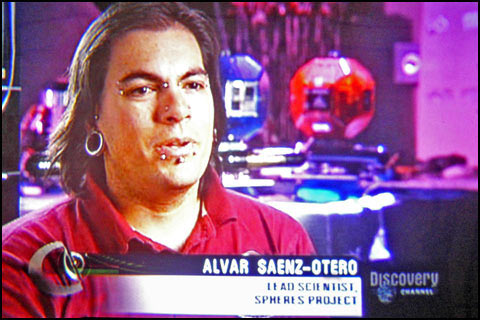

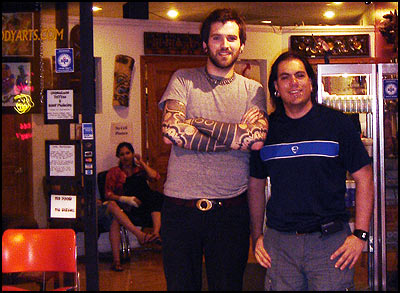
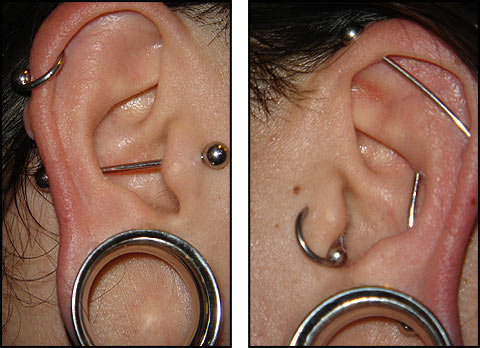
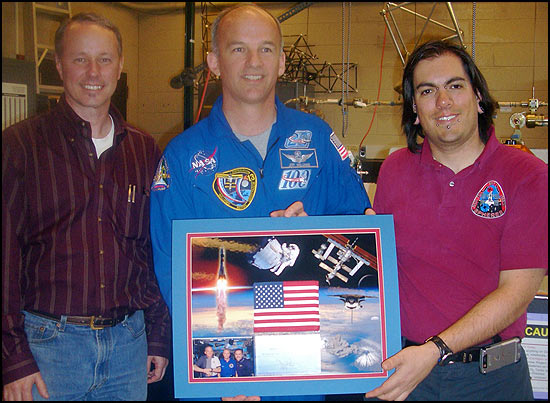
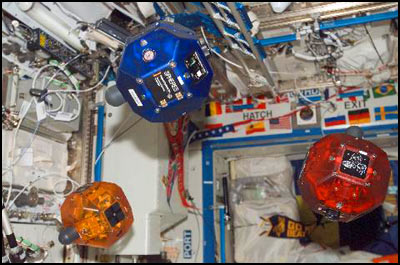


This is a cool article, thanks Shannon!
This is a cool article, thanks Shannon!
This is a cool article, thanks Shannon!